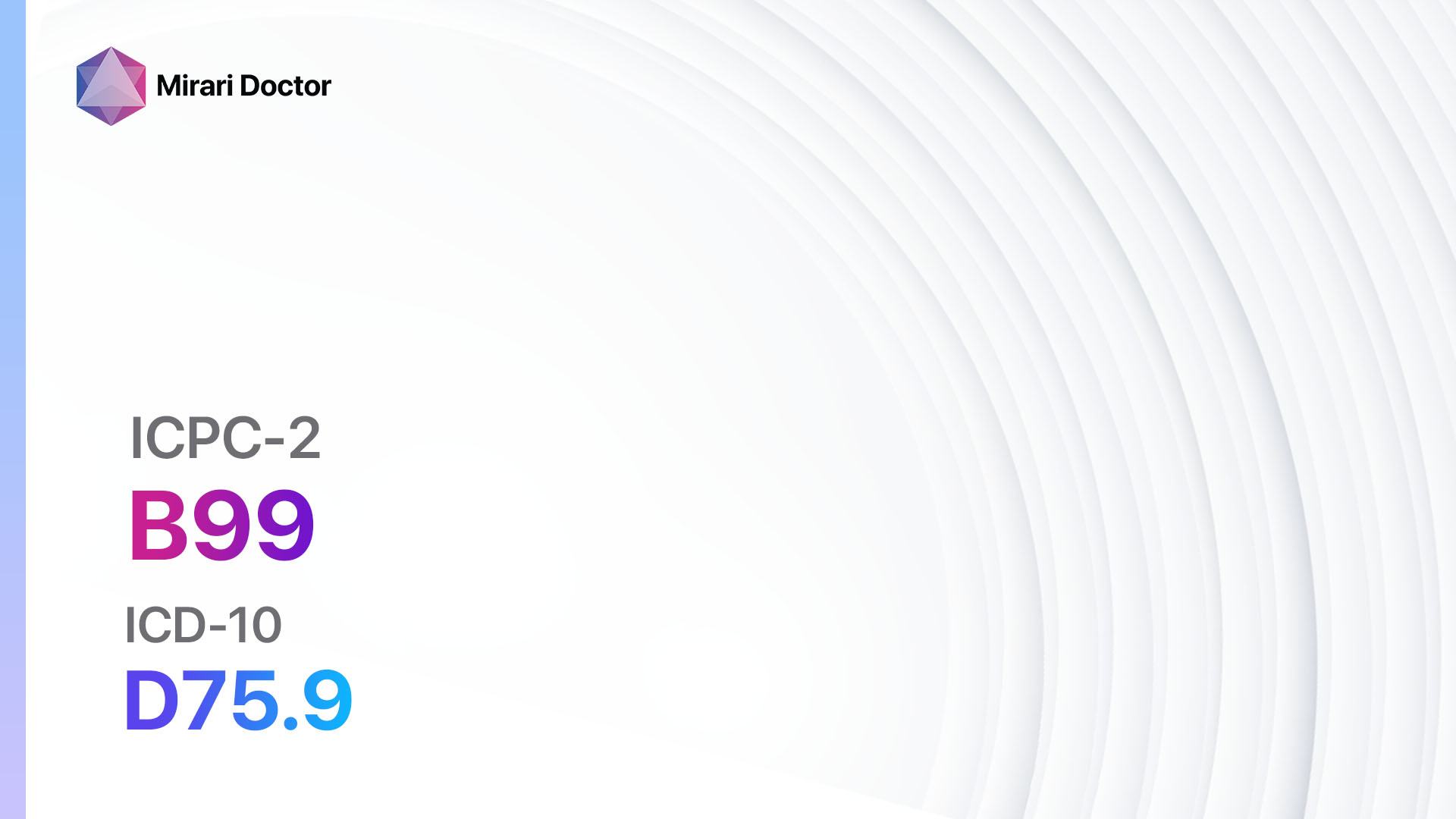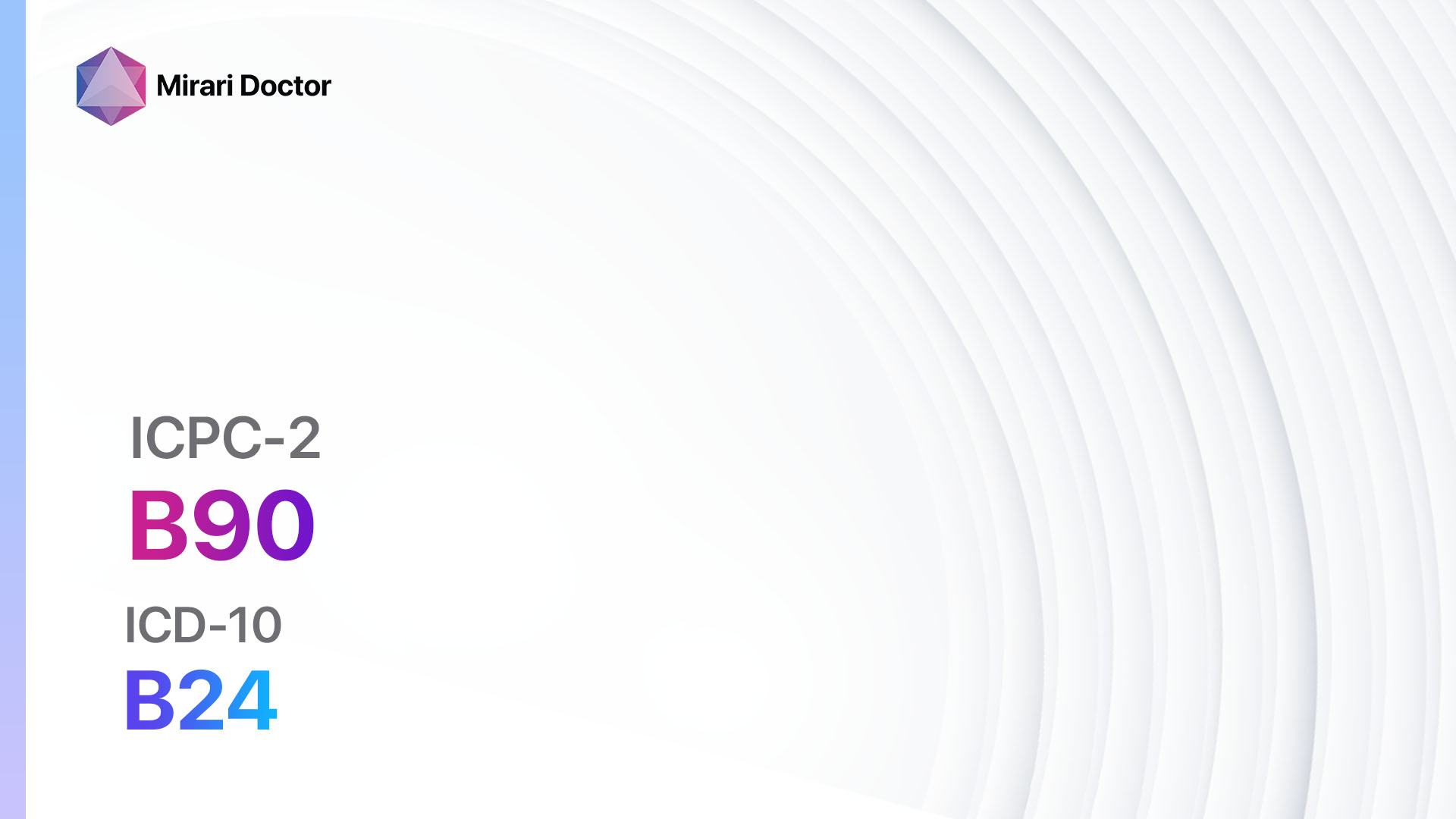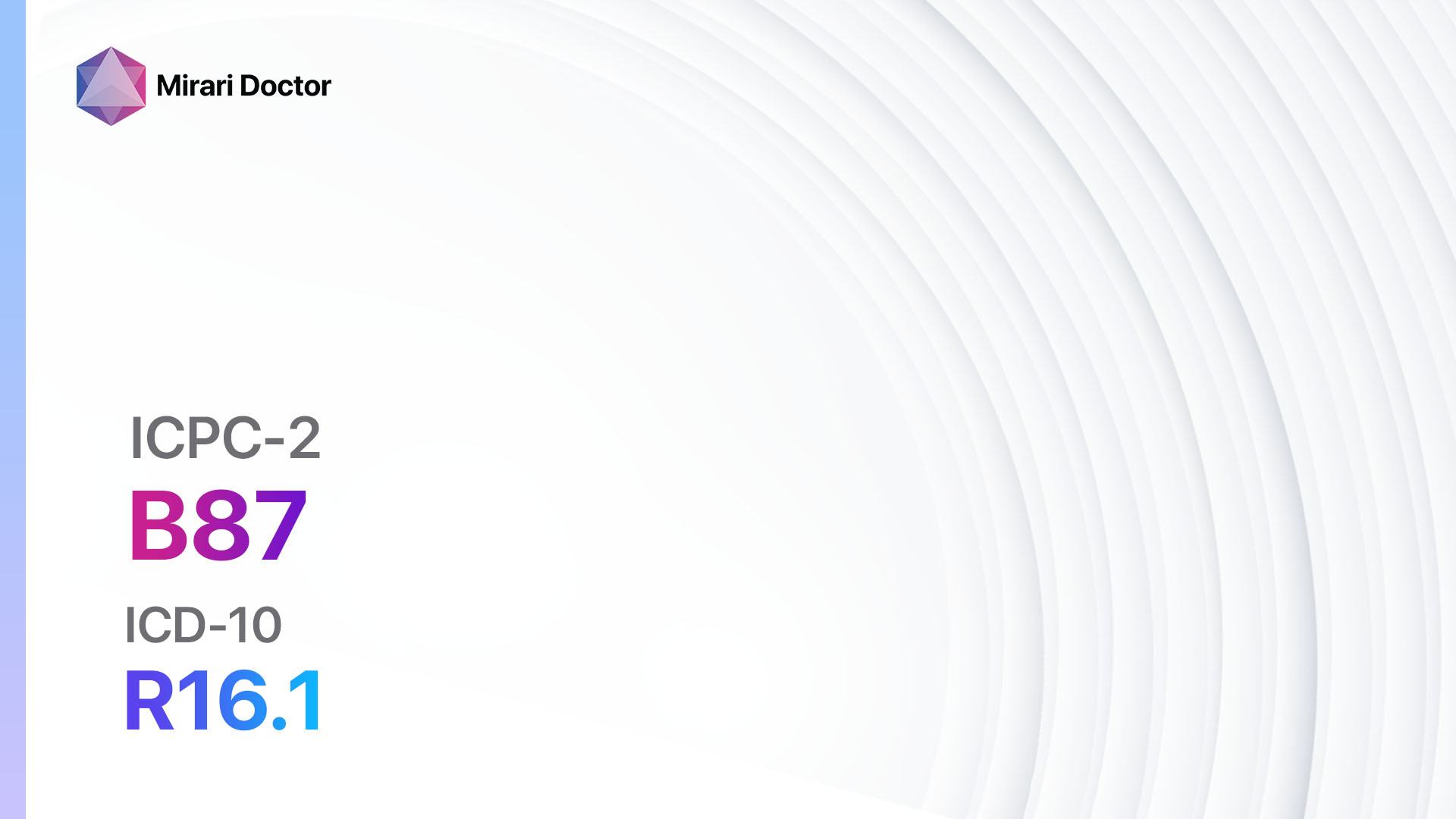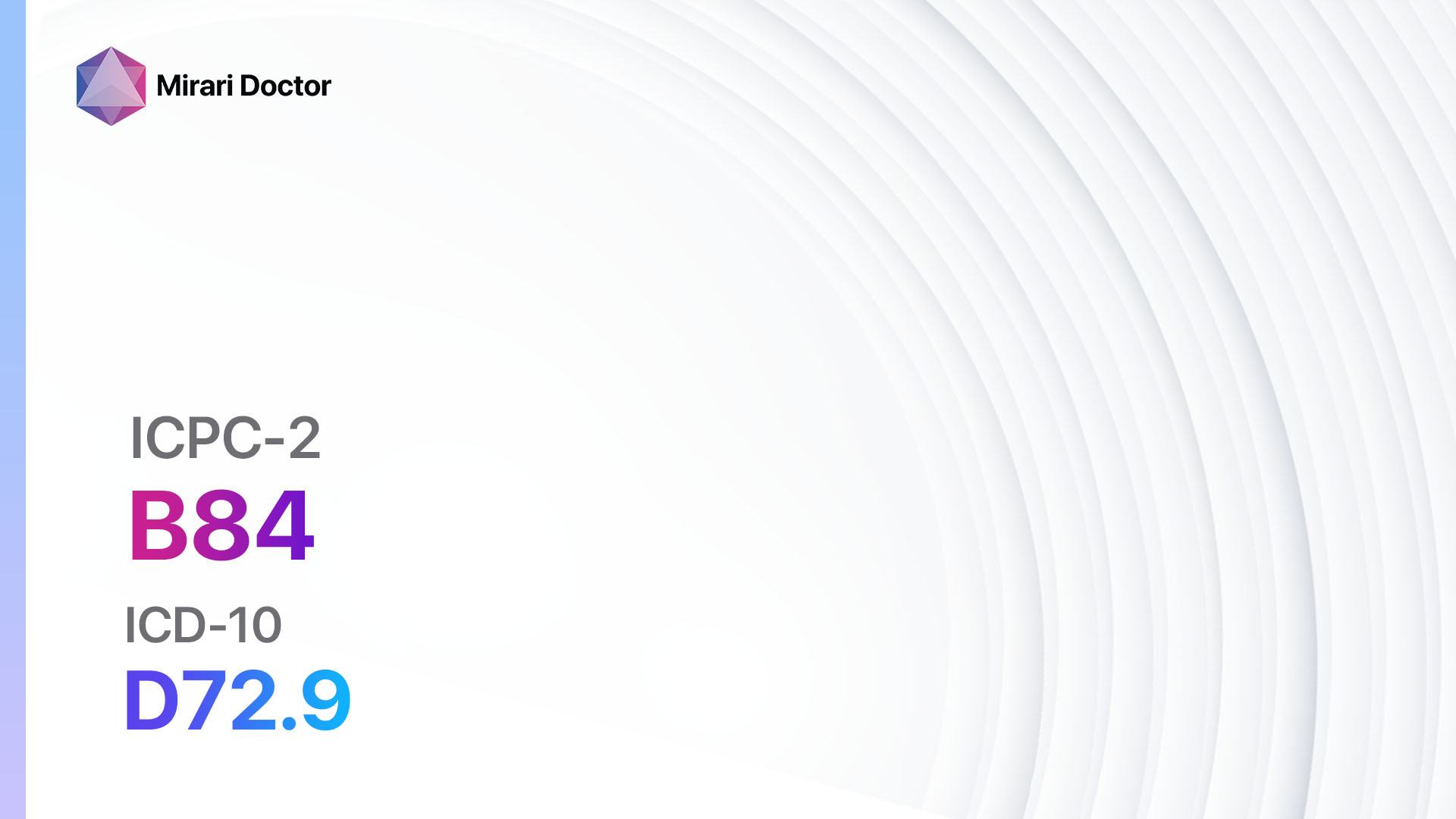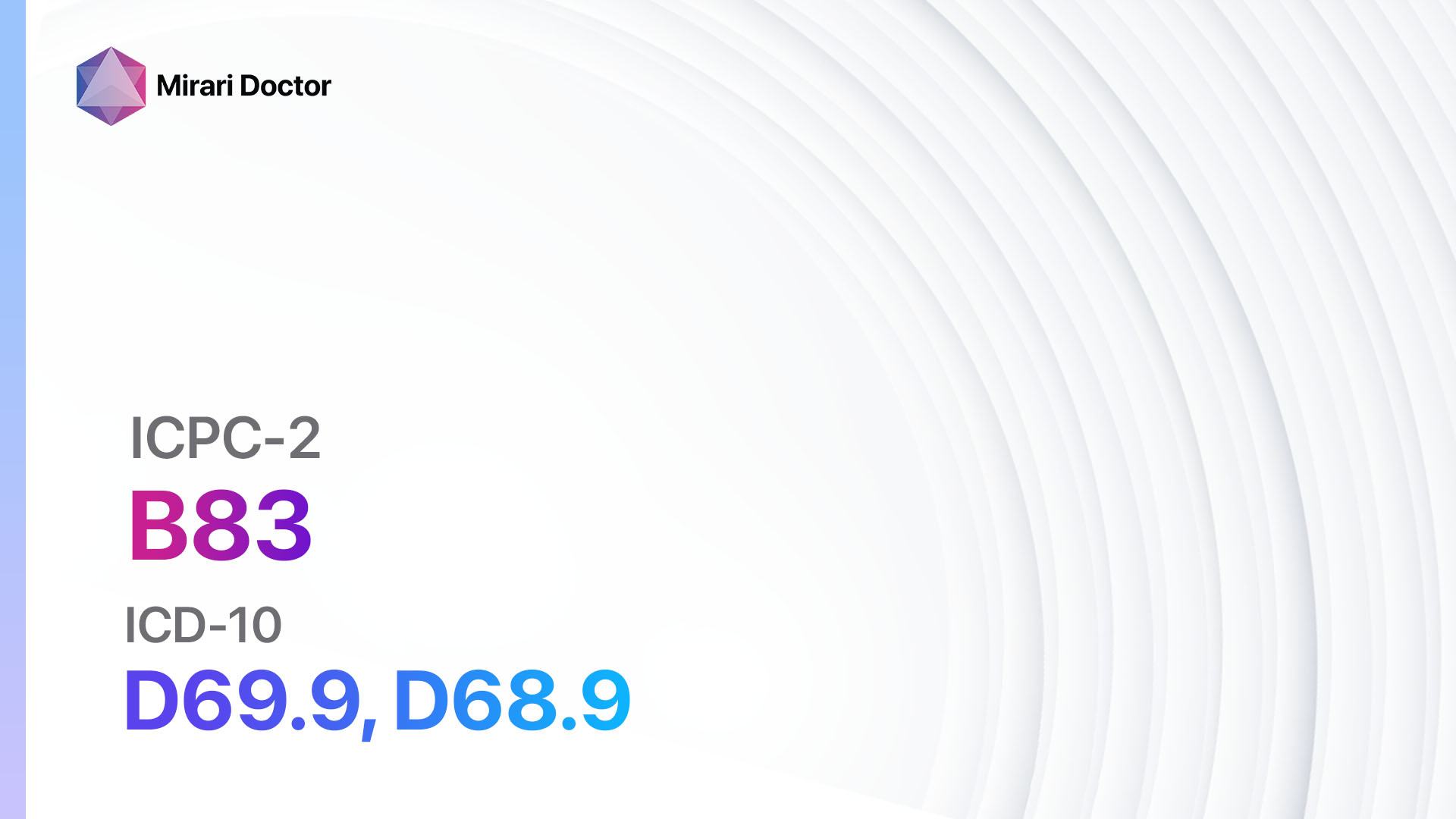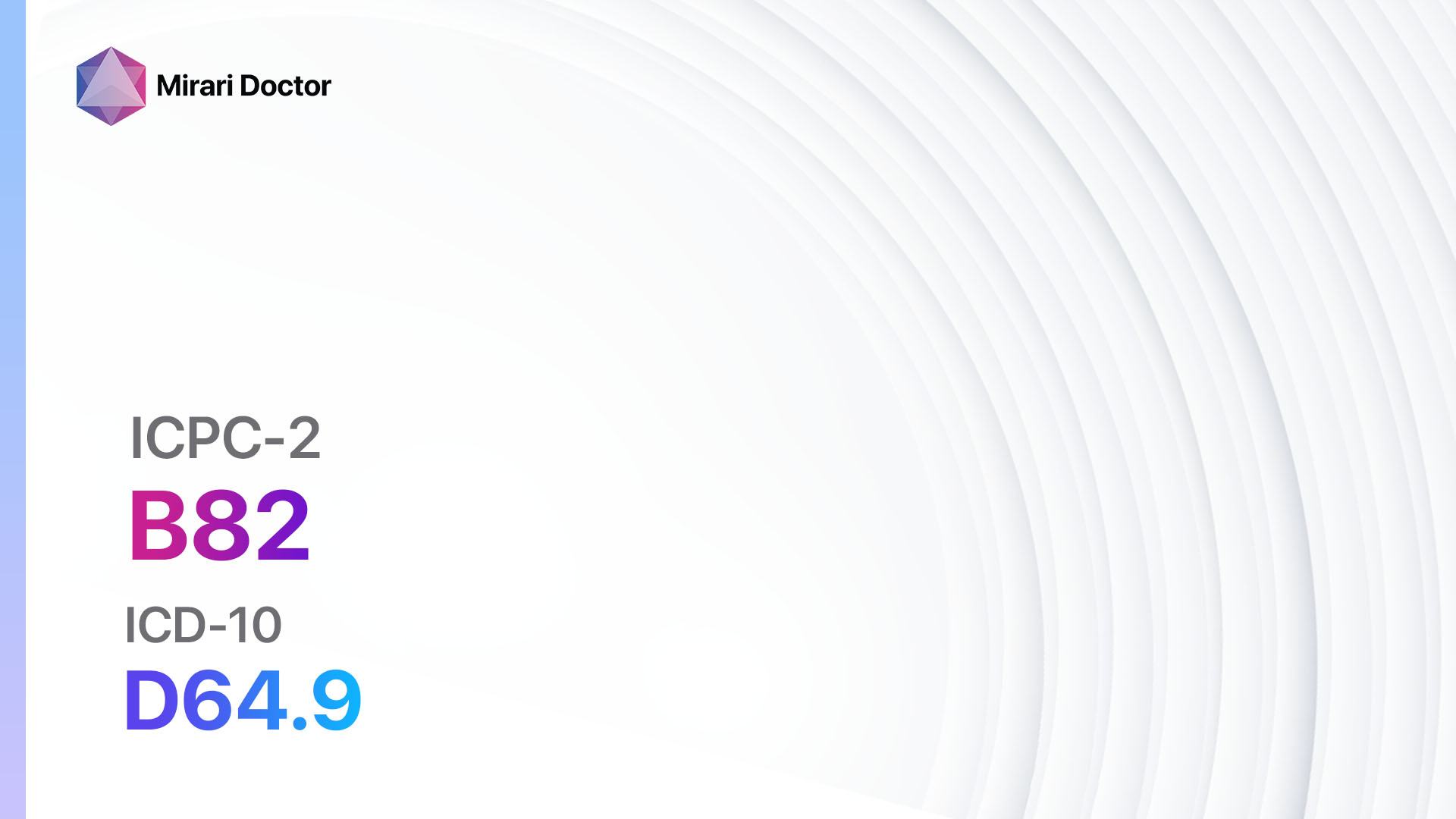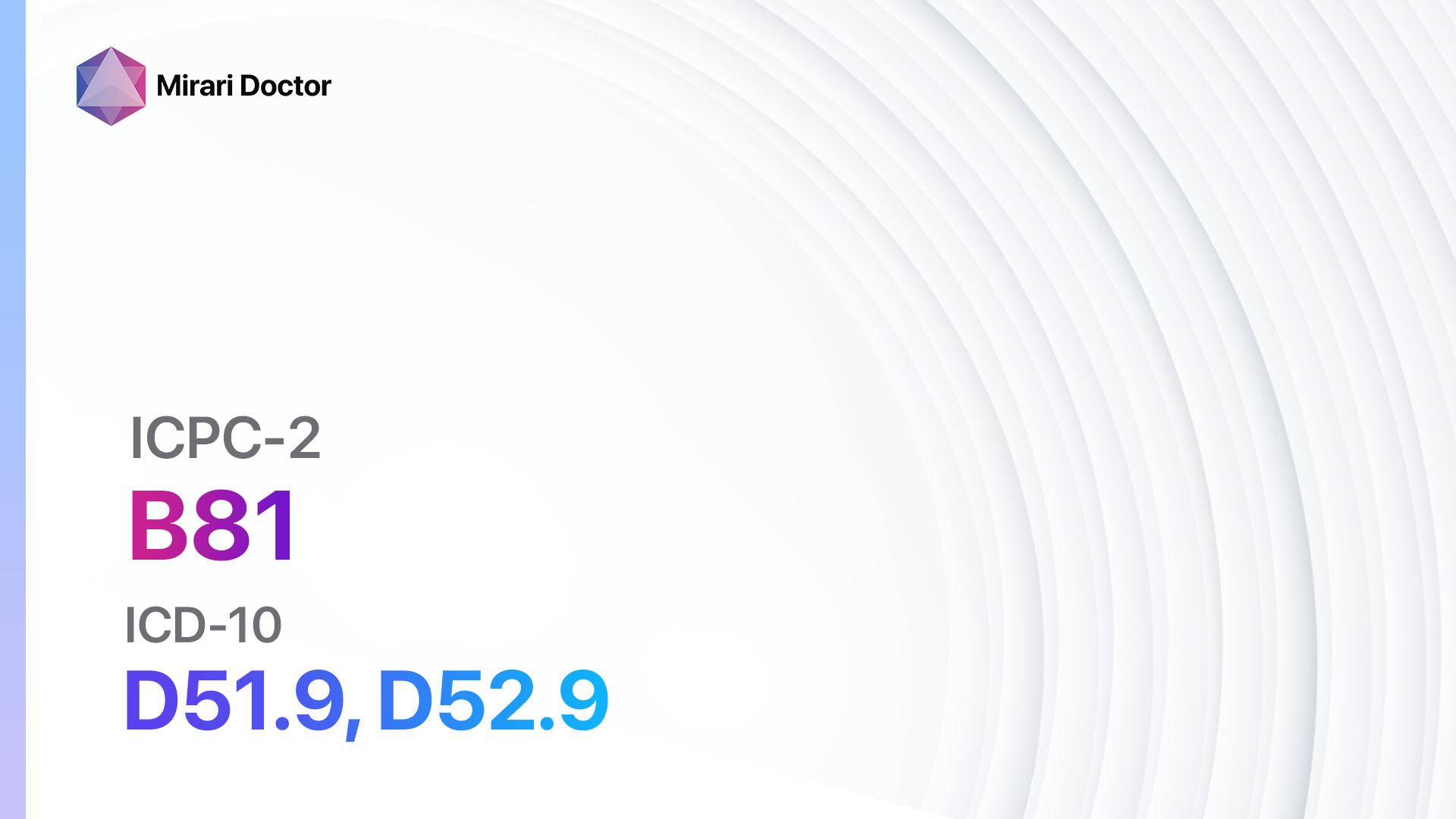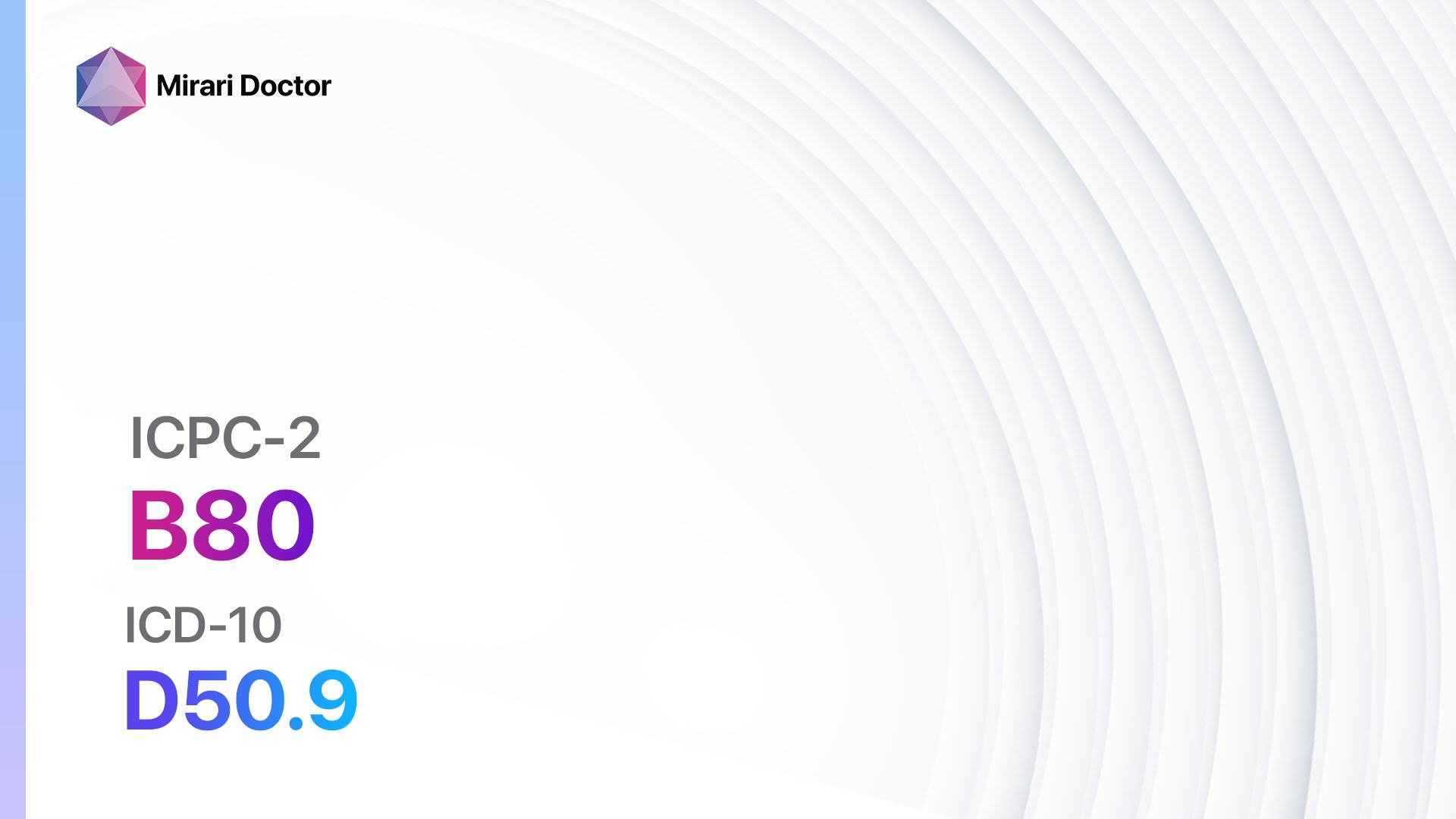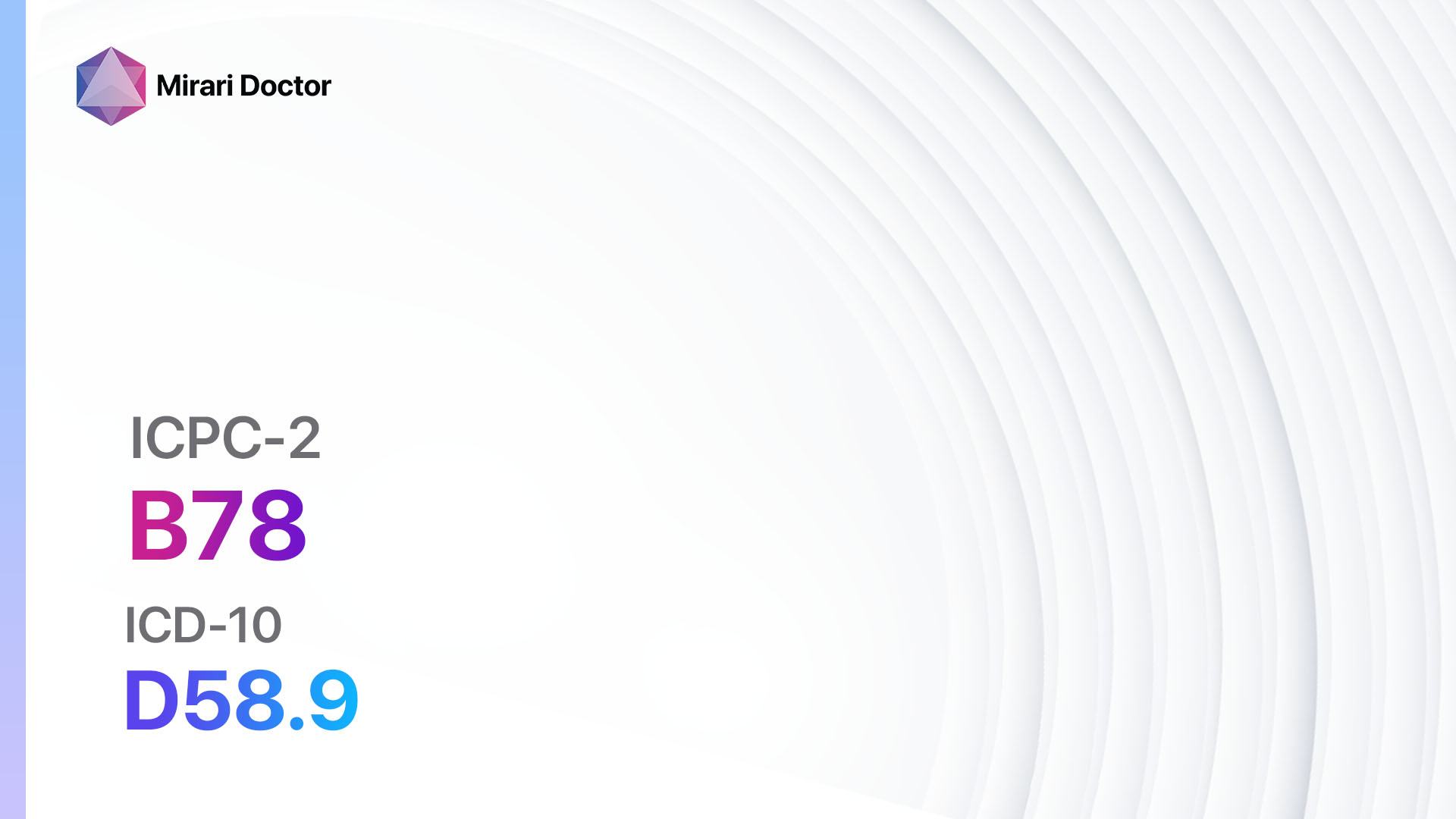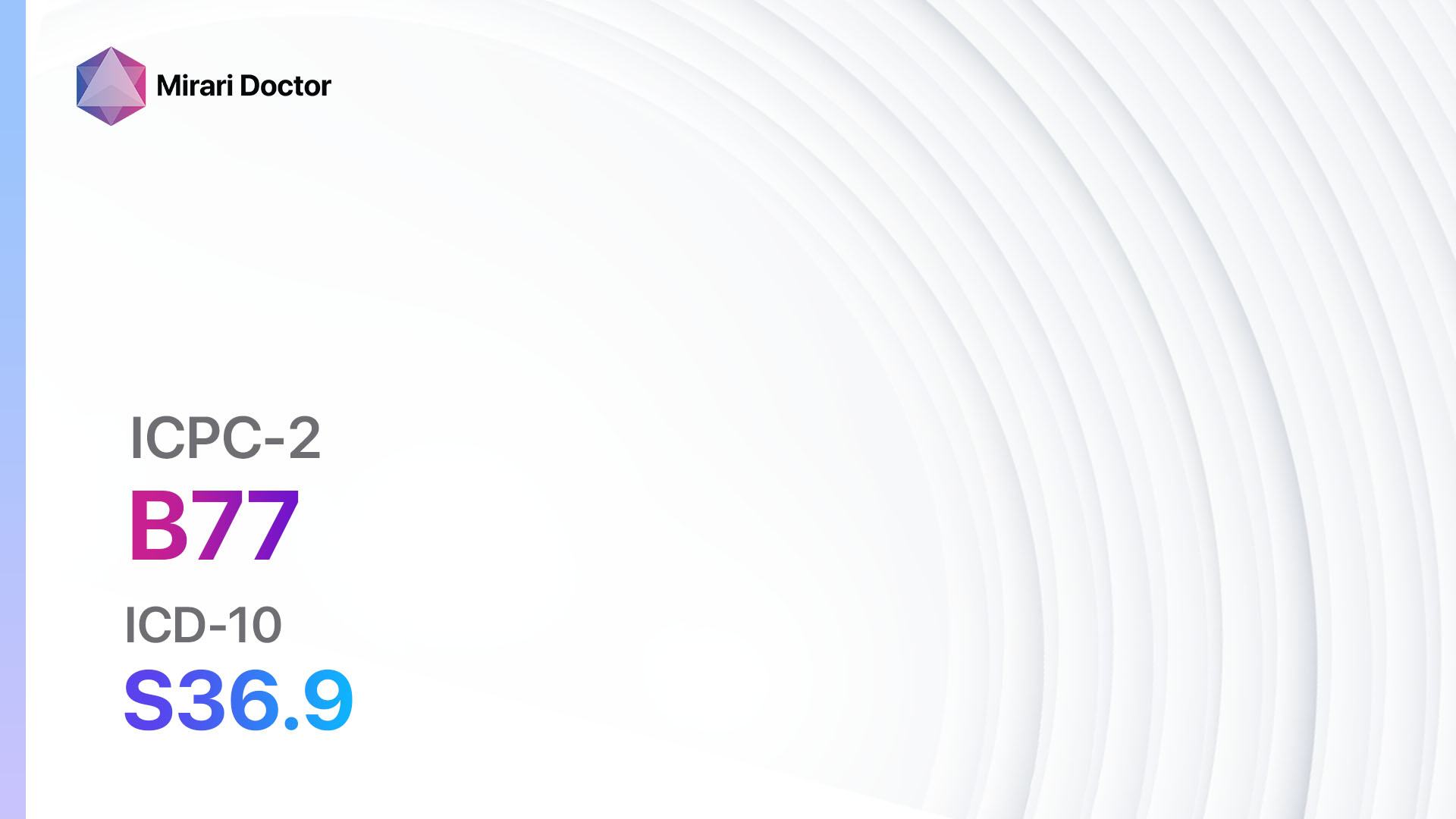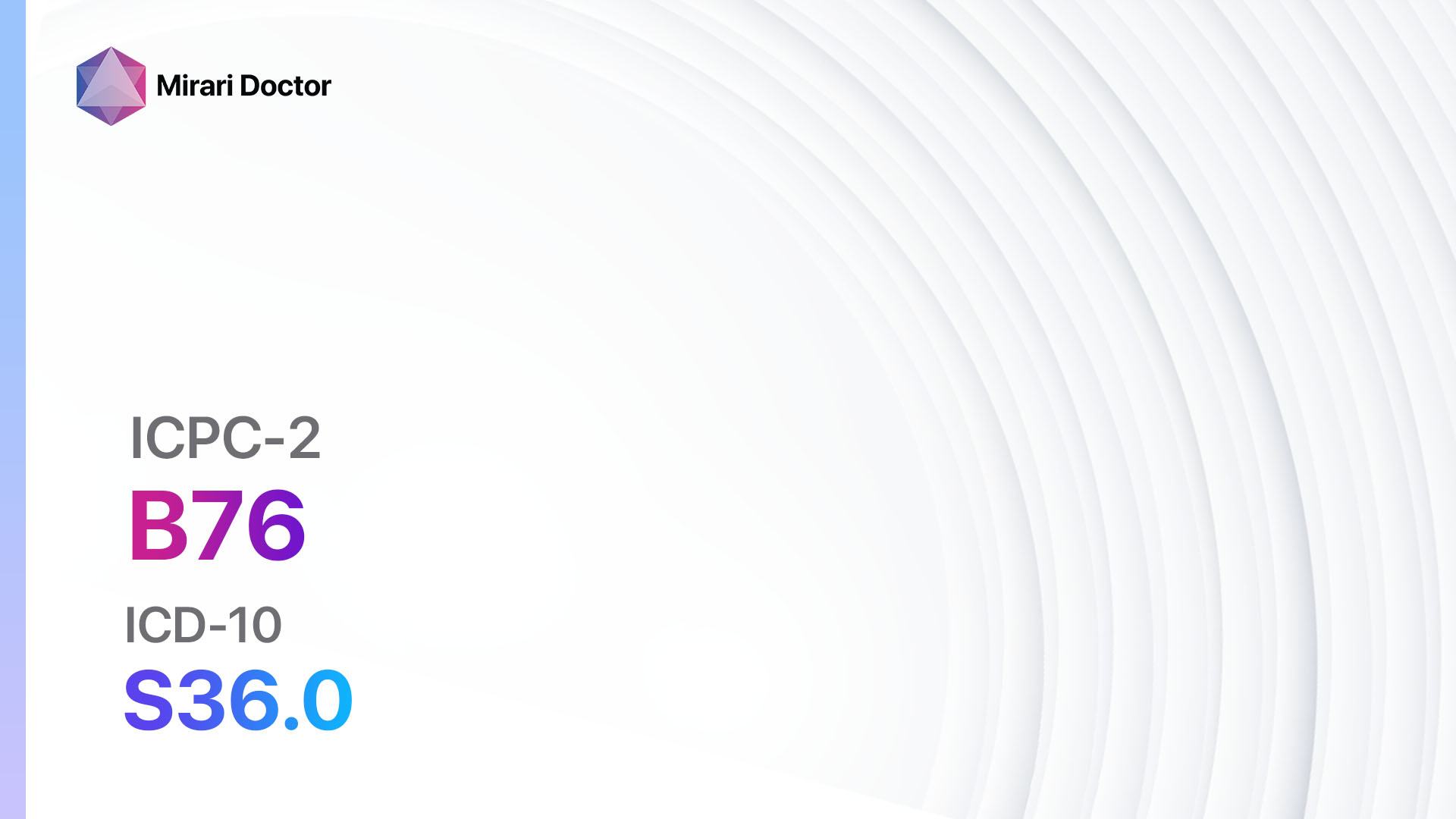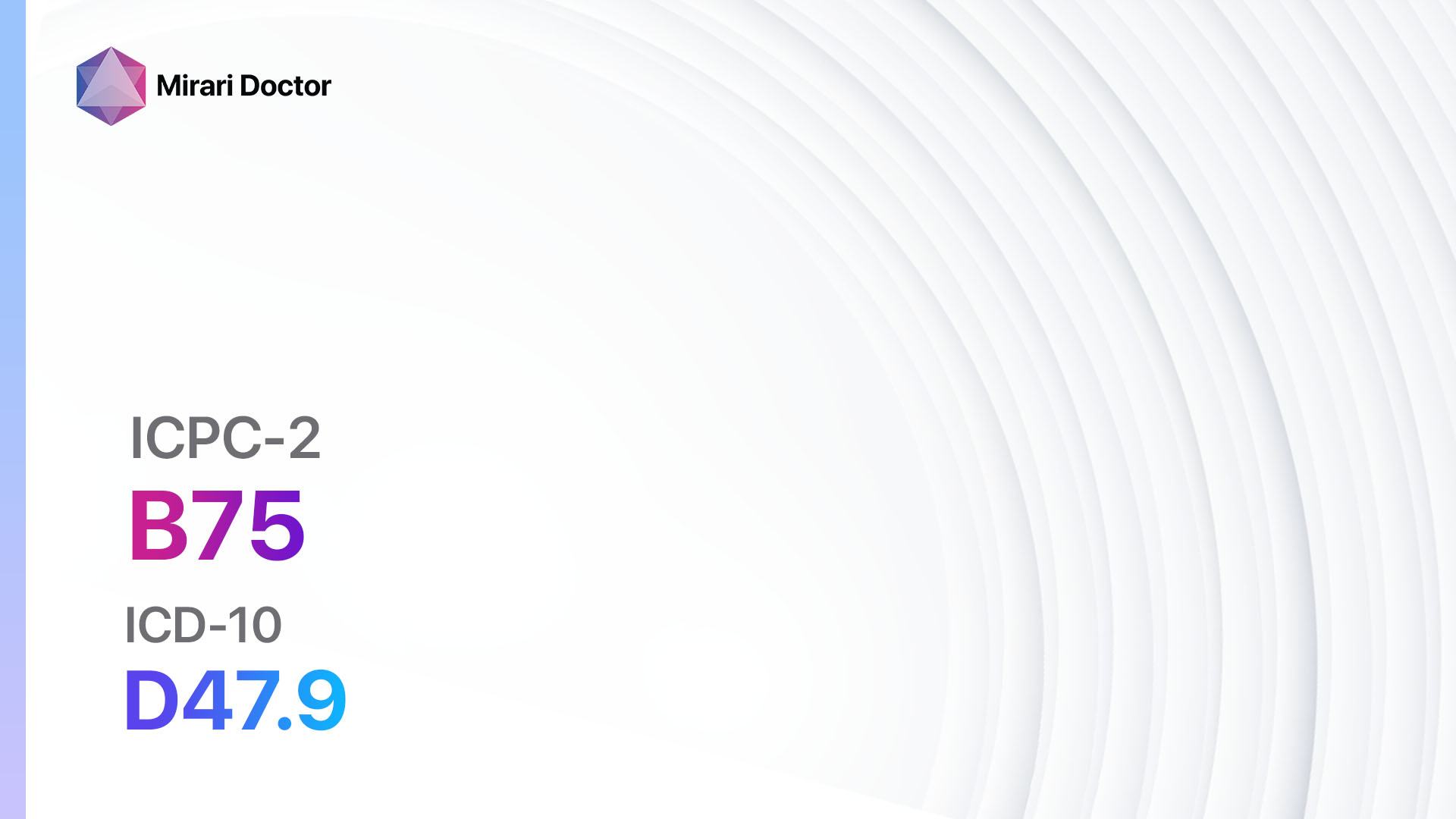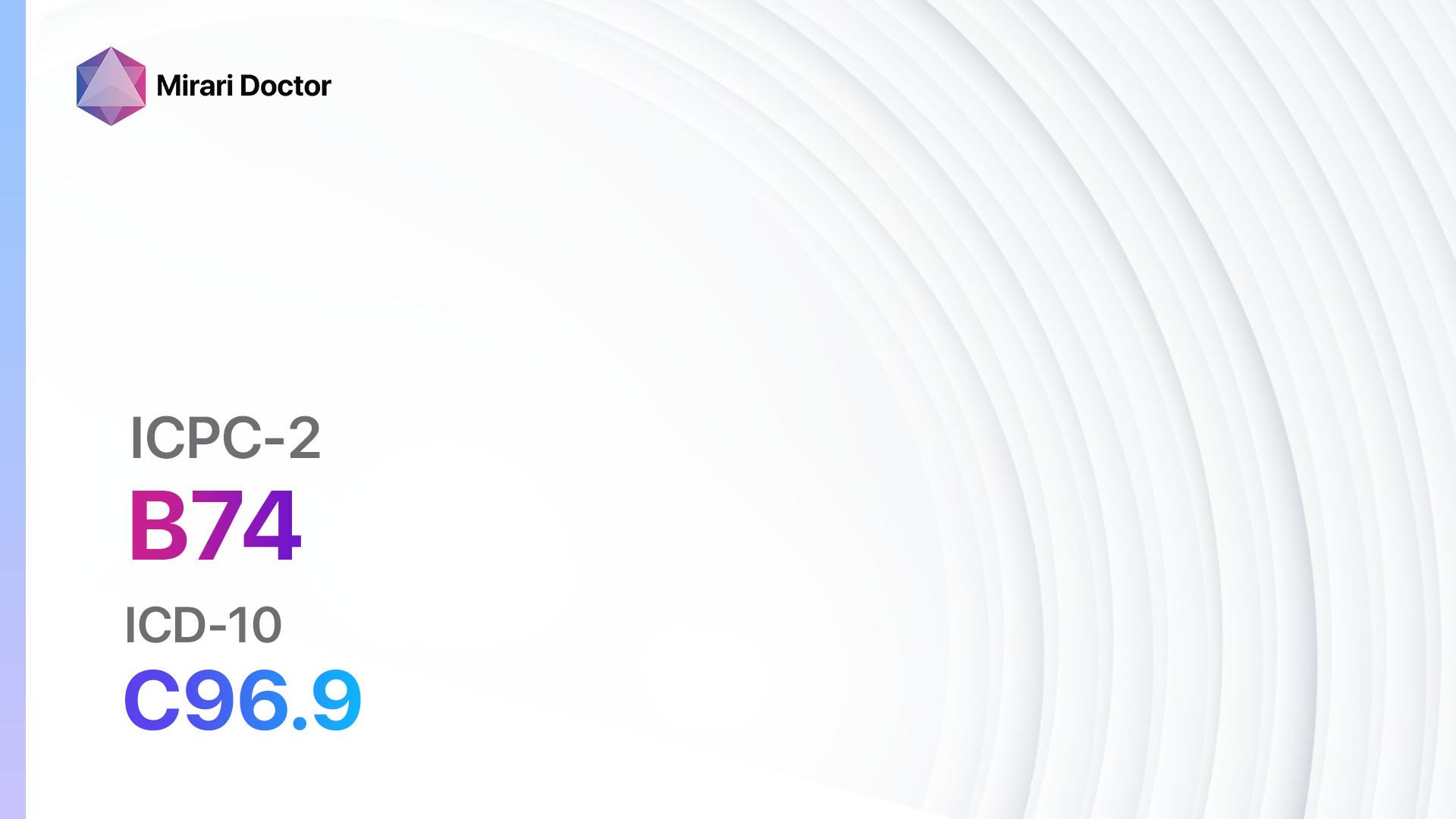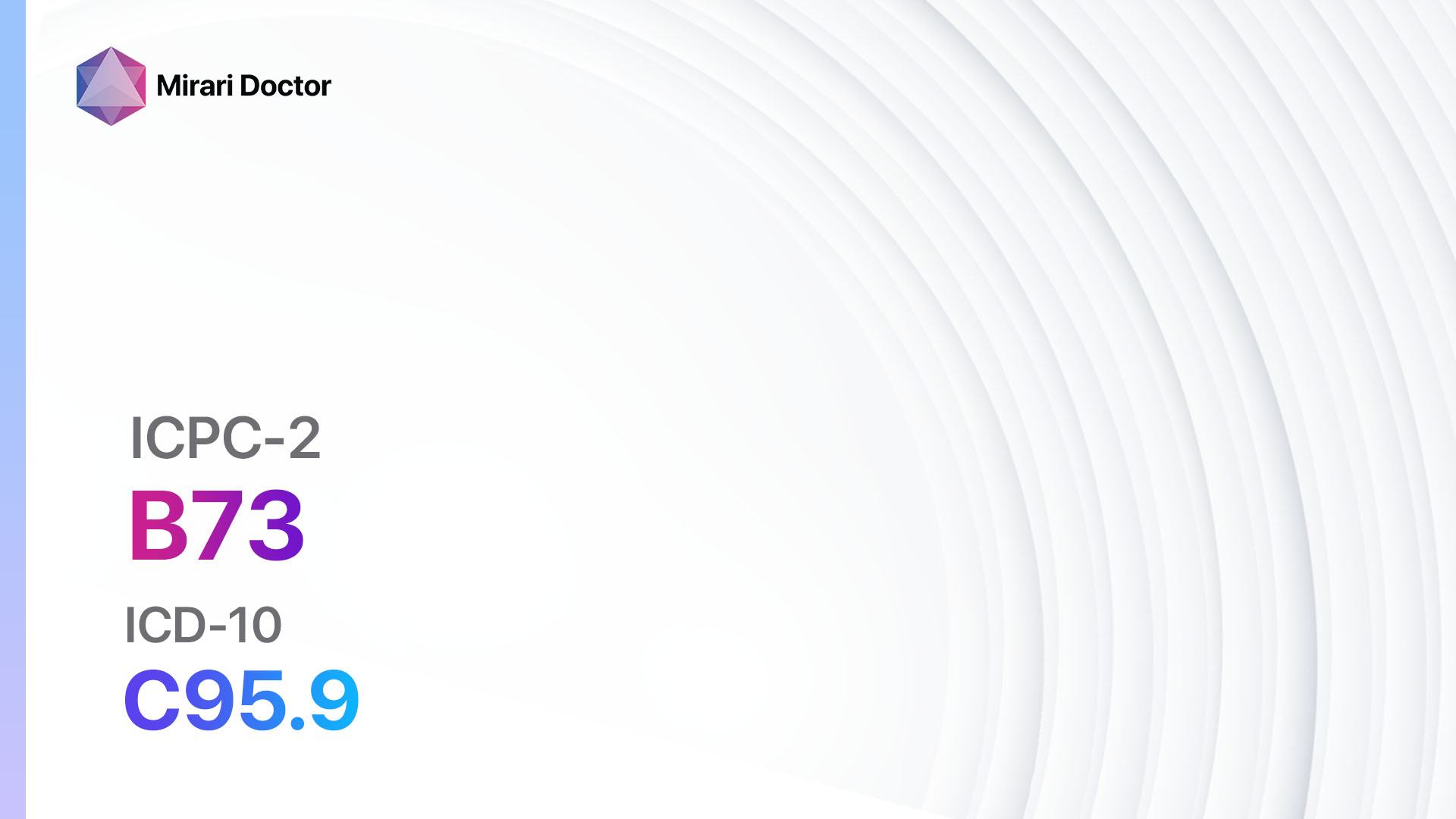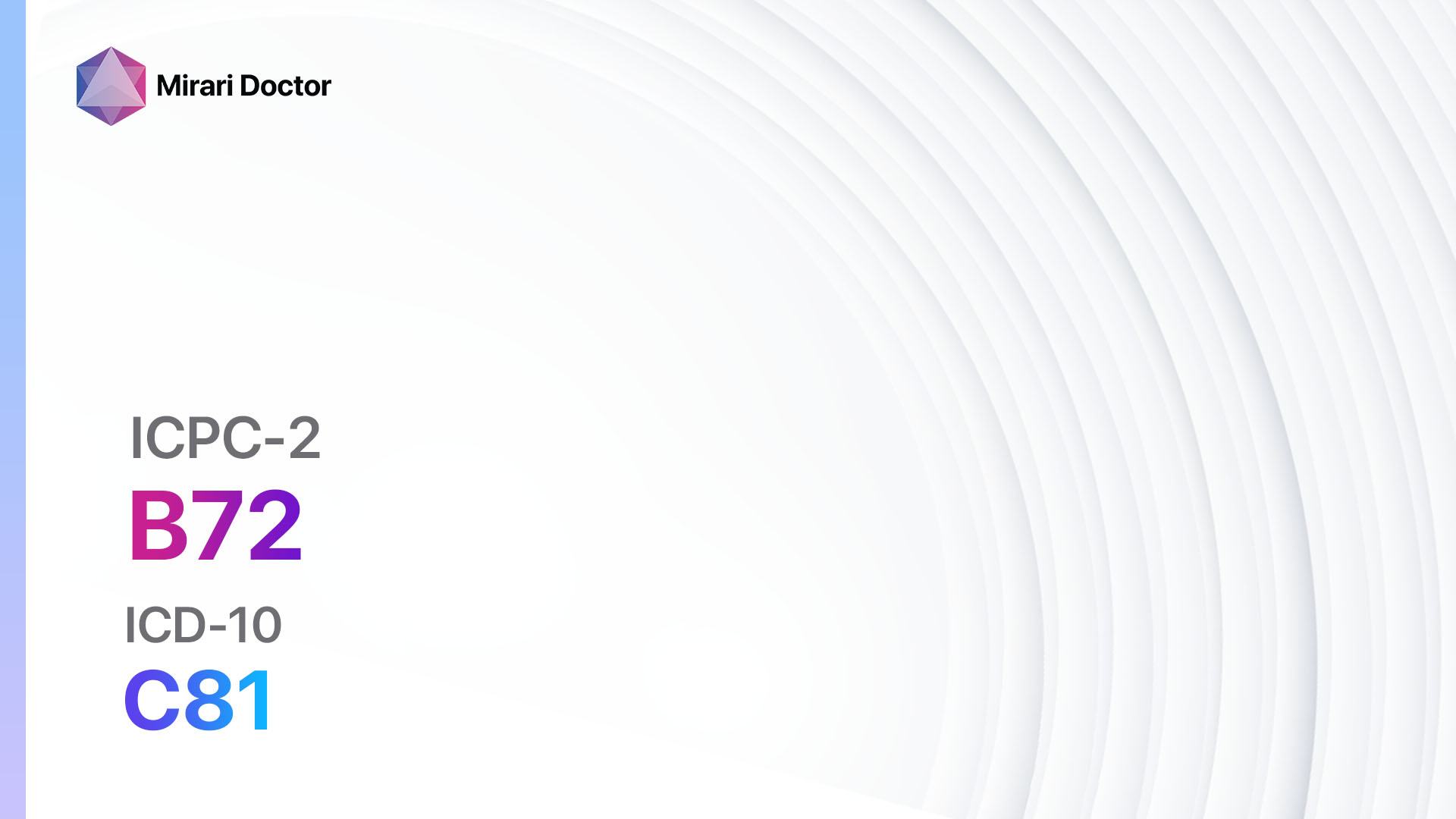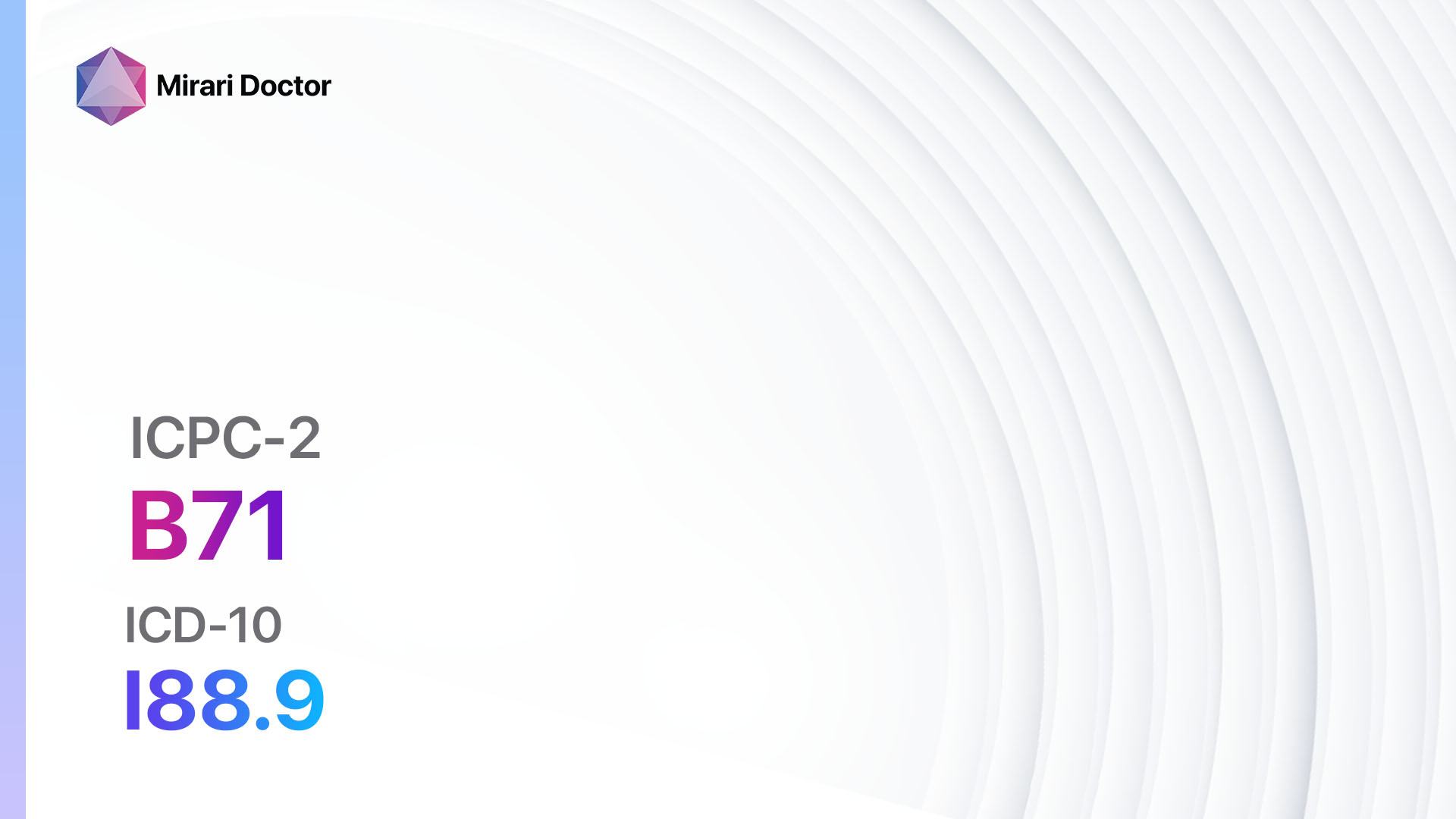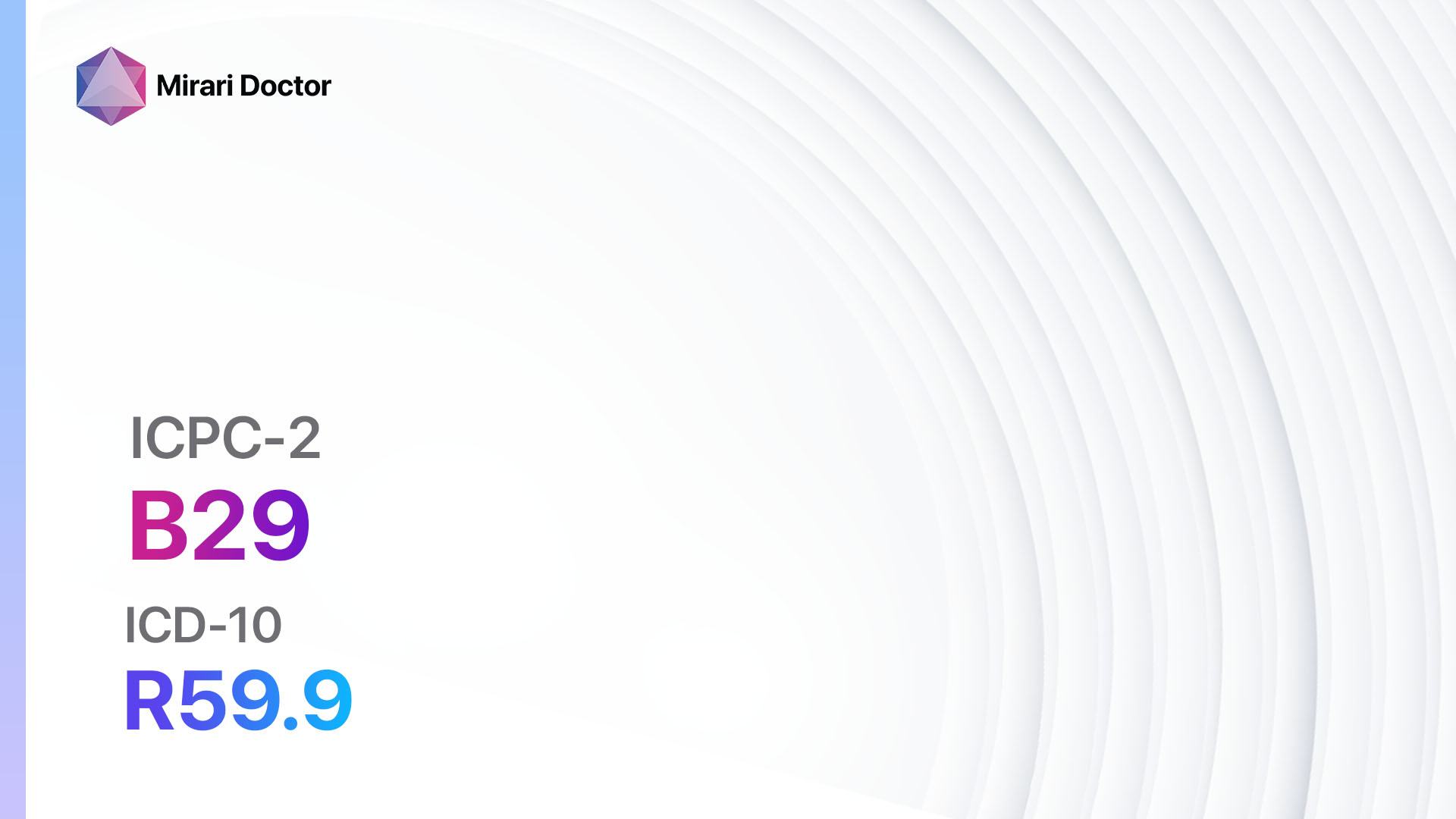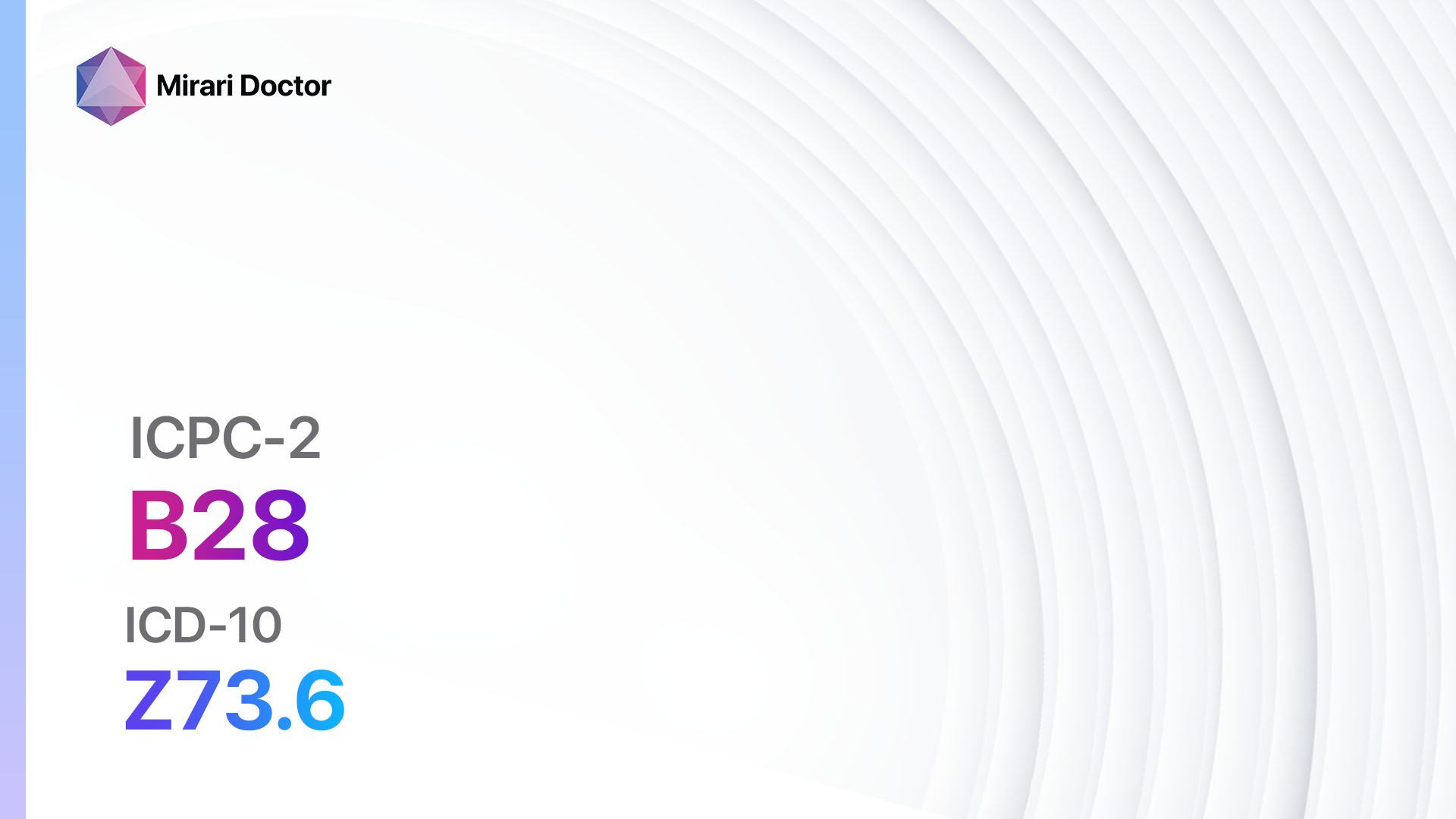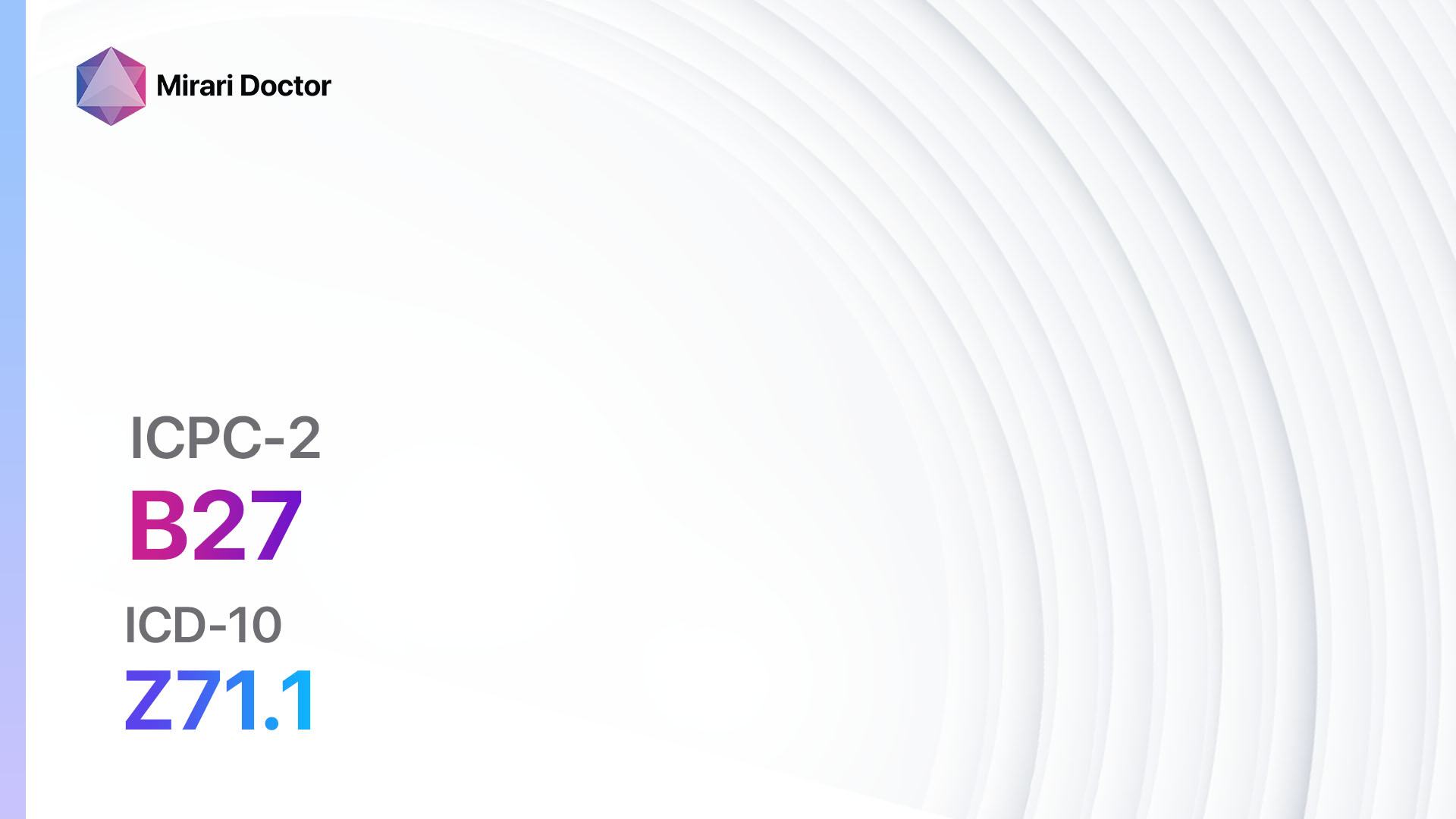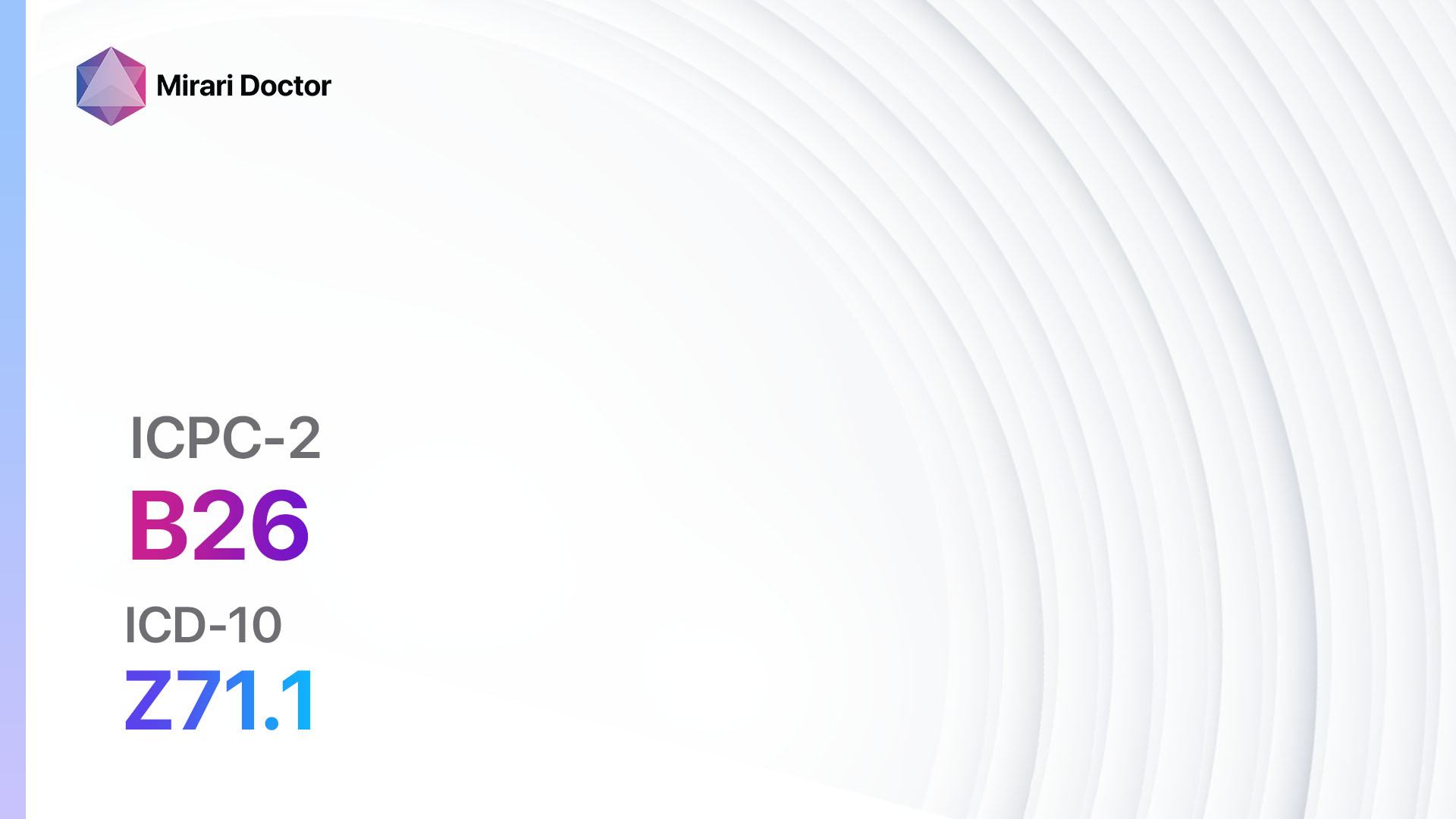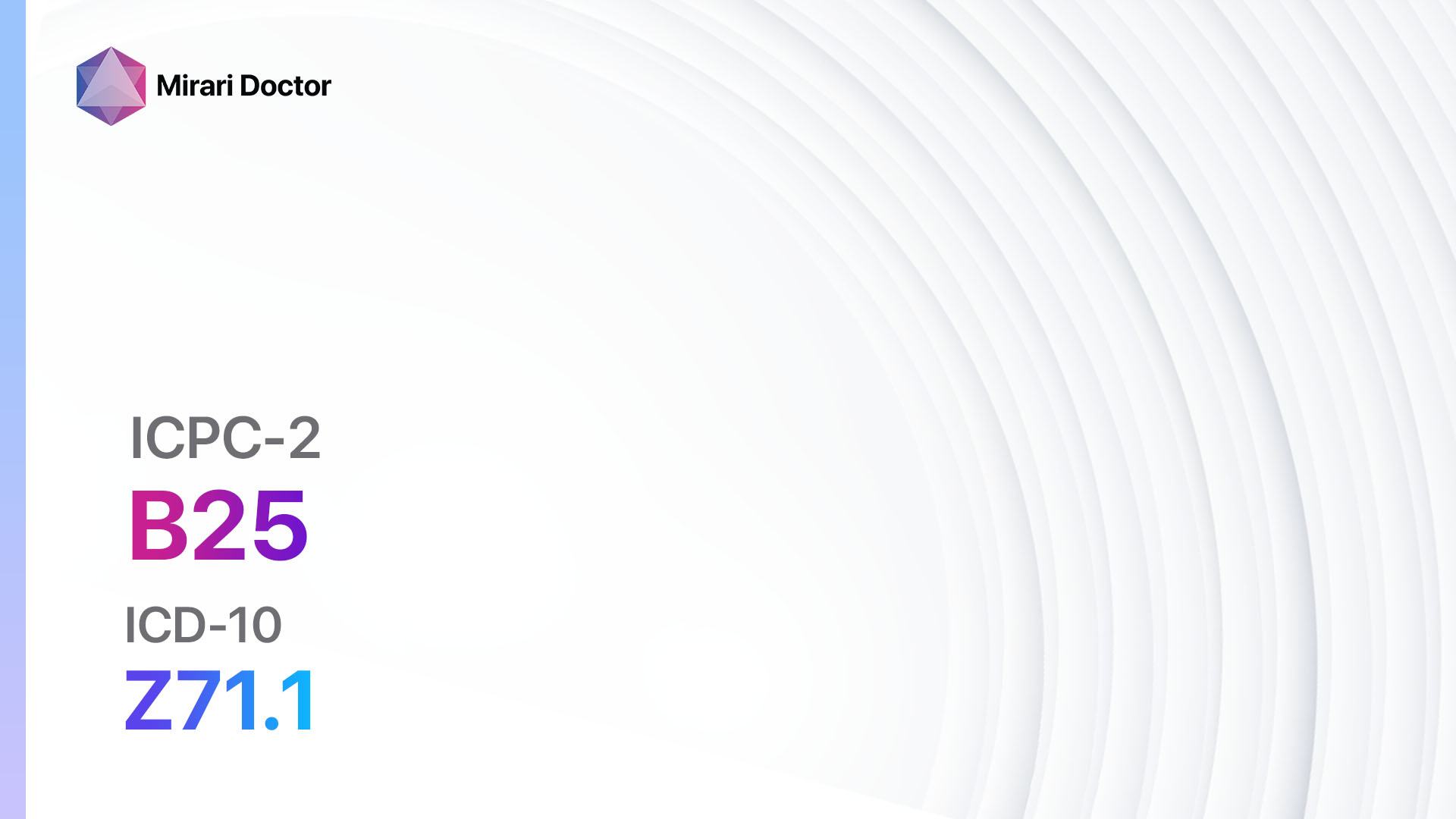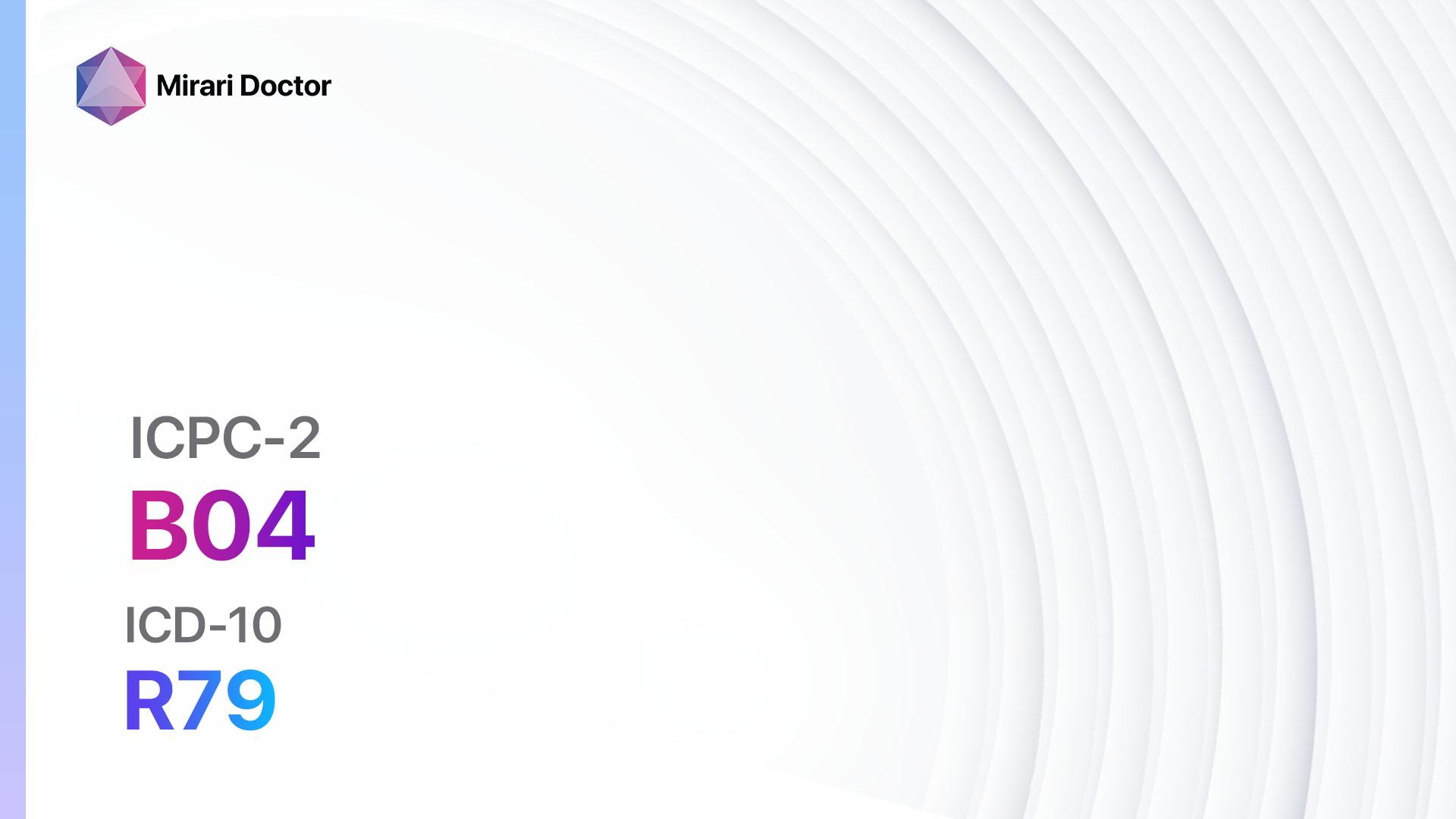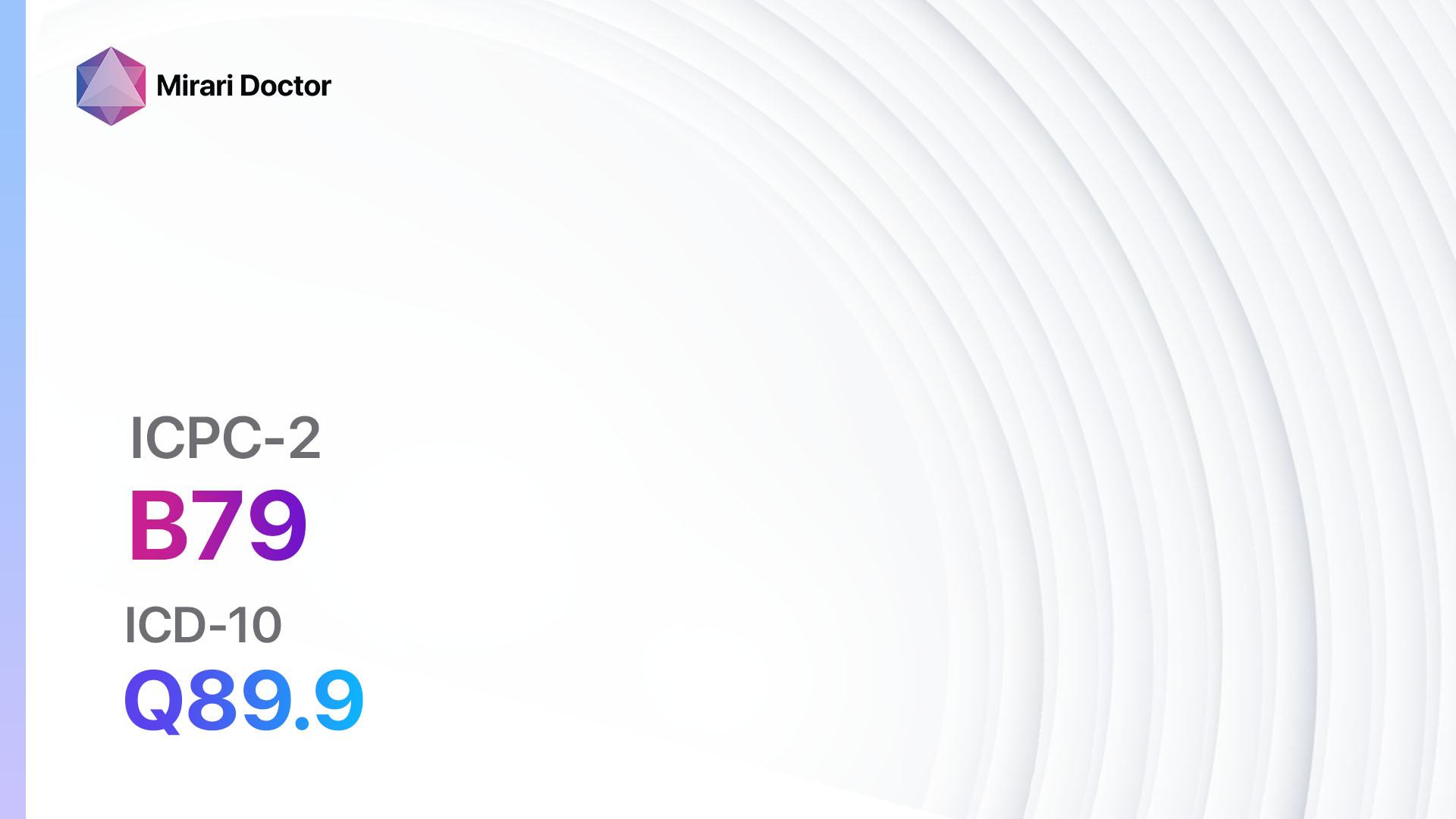
Introduction
Congenital anomalies of the blood and lymphatic system are abnormalities that occur during fetal development and affect the formation and function of these vital systems. These anomalies can have significant impacts on a person’s health and well-being[1]. The aim of this guide is to provide healthcare professionals with a comprehensive overview of the diagnosis and management of congenital anomalies of the blood and lymphatic system[2].
Codes
- ICPC-2 Code: B79 Congen.anom. blood/lymph other[3]
- ICD-10 Code: Q89.9 Congenital malformation, unspecified[4]
Symptoms
- Abnormal bleeding or bruising: Patients may experience frequent or excessive bleeding, easy bruising, or prolonged bleeding after minor injuries[5].
- Enlarged lymph nodes: Swollen or enlarged lymph nodes may be present, indicating a disruption in the lymphatic system[6].
- Anemia: Patients may exhibit symptoms of anemia, such as fatigue, weakness, and pale skin[7].
- Recurrent infections: Due to compromised immune function, patients may experience frequent or severe infections[8].
Causes
- Genetic factors: Congenital anomalies of the blood and lymphatic system can be caused by genetic mutations or abnormalities[9].
- Environmental factors: Exposure to certain substances or toxins during pregnancy can increase the risk of these anomalies[10].
- Maternal infections: Infections during pregnancy, such as rubella or cytomegalovirus, can contribute to the development of these anomalies.
Diagnostic Steps
Medical History
- Gather information about the patient’s family history, including any known genetic disorders or congenital anomalies.
- Inquire about the patient’s medical history, including any previous diagnoses or treatments related to blood or lymphatic system abnormalities.
- Ask about the presence of symptoms, such as abnormal bleeding, recurrent infections, or enlarged lymph nodes.
Physical Examination
- Perform a thorough physical examination, paying particular attention to the lymph nodes, spleen, and liver.
- Look for signs of anemia, such as pale skin or mucous membranes.
- Assess for any physical abnormalities, such as webbed fingers or toes, that may indicate a congenital anomaly.
Laboratory Tests
- Complete blood count (CBC): This test can identify abnormalities in red and white blood cell counts, as well as hemoglobin and platelet levels.
- Coagulation studies: Assessing the patient’s clotting factors and bleeding time can help diagnose any bleeding disorders.
- Lymph node biopsy: If enlarged lymph nodes are present, a biopsy may be performed to determine the cause and nature of the enlargement.
- Genetic testing: In cases where a genetic cause is suspected, genetic testing can help identify specific mutations or abnormalities.
Diagnostic Imaging
- Ultrasound: This non-invasive imaging modality can be used to visualize the lymph nodes, spleen, and other organs affected by the anomaly.
- Magnetic resonance imaging (MRI): MRI provides detailed images of the blood vessels and lymphatic system, allowing for a more comprehensive assessment.
- Computed tomography (CT) scan: CT scans can provide detailed cross-sectional images of the blood vessels and lymphatic system, aiding in diagnosis.
Other Tests
- Flow cytometry: This specialized test can analyze the characteristics of blood cells and help identify specific abnormalities.
- Bone marrow biopsy: If a blood disorder is suspected, a bone marrow biopsy may be performed to assess the production and function of blood cells.
Follow-up and Patient Education
- Schedule regular follow-up appointments to monitor the patient’s condition and response to treatment.
- Provide education on the nature of the congenital anomaly, its potential complications, and strategies for managing symptoms.
- Offer resources and support for patients and their families to cope with the emotional and practical challenges associated with these conditions.
Possible Interventions
Traditional Interventions
Medications:
Top 5 drugs for Congenital Anomalies of Blood/Lymph:
- Erythropoietin (EPO): Stimulates red blood cell production.
- Cost: Varies depending on the brand and dosage. Approximately $100-$500 per month.
- Contraindications: Hypersensitivity to EPO, uncontrolled hypertension.
- Side effects: Headache, nausea, injection site reactions.
- Severe side effects: Seizures, severe allergic reactions.
- Drug interactions: None significant.
- Warning: Regular monitoring of blood pressure and hemoglobin levels required.
- Immunoglobulin therapy: Provides passive immunity and helps prevent infections.
- Cost: Varies depending on the brand and dosage. Approximately $500-$2000 per infusion.
- Contraindications: Hypersensitivity to immunoglobulins, severe heart failure.
- Side effects: Headache, fever, rash.
- Severe side effects: Anaphylaxis, renal failure.
- Drug interactions: None significant.
- Warning: Infusion reactions may occur, requiring close monitoring during administration.
- Anticoagulants (e.g., Heparin, Warfarin): Prevent blood clot formation.
- Cost: Varies depending on the brand and dosage. Approximately $10-$100 per month.
- Contraindications: Active bleeding, history of heparin-induced thrombocytopenia.
- Side effects: Bleeding, bruising, hair loss.
- Severe side effects: Hemorrhage, osteoporosis.
- Drug interactions: Many potential interactions with other medications.
- Warning: Regular monitoring of blood clotting parameters required.
- Corticosteroids (e.g., Prednisone, Dexamethasone): Suppress inflammation and immune response.
- Cost: Varies depending on the brand and dosage. Approximately $10-$100 per month.
- Contraindications: Active infections, uncontrolled diabetes.
- Side effects: Weight gain, mood changes, increased appetite.
- Severe side effects: Adrenal insufficiency, osteoporosis.
- Drug interactions: Many potential interactions with other medications.
- Warning: Long-term use may require gradual tapering to avoid adrenal crisis.
- Antibiotics: Used to treat and prevent bacterial infections.
- Cost: Varies depending on the specific antibiotic and dosage. Approximately $10-$100 per course of treatment.
- Contraindications: Hypersensitivity to the antibiotic, severe liver disease.
- Side effects: Nausea, diarrhea, allergic reactions.
- Severe side effects: Severe allergic reactions, Clostridium difficile infection.
- Drug interactions: Many potential interactions with other medications.
- Warning: Antibiotic resistance is a growing concern, and appropriate use is essential.
Alternative Drugs:
- Interferon-alpha: Used in certain blood disorders to stimulate the immune system.
- Rituximab: A monoclonal antibody used to treat certain lymphomas and autoimmune disorders.
- Hydroxyurea: Used in the treatment of sickle cell disease and certain types of leukemia.
- Lenalidomide: Used in the treatment of multiple myeloma and certain lymphomas.
- Sirolimus: An immunosuppressant used in certain blood disorders and organ transplantation.
Surgical Procedures:
- Blood transfusion: In cases of severe anemia, a blood transfusion may be necessary to restore normal blood cell levels.
- Cost: Varies depending on the blood type and quantity required. Approximately $200-$1000 per unit of blood.
- Lymph node removal: In cases of enlarged or abnormal lymph nodes, surgical removal may be necessary for diagnosis or treatment.
- Cost: Varies depending on the complexity of the procedure. Approximately $5000-$20,000.
Alternative Interventions
- Acupuncture: May help improve blood flow and reduce symptoms.
- Cost: $60-$120 per session.
- Herbal supplements: Some herbs, such as turmeric or ginger, may have potential benefits for blood and lymphatic system health.
- Cost: Varies depending on the specific supplement.
- Meditation: Can help reduce stress and promote overall well-being.
- Cost: Varies depending on the specific practice.
- Massage therapy: May improve circulation and lymphatic flow.
- Cost: $50-$100 per session.
- Yoga: Can help improve flexibility, circulation, and overall health.
- Cost: Varies depending on the specific class or instructor.
Lifestyle Interventions
- Regular exercise: Engaging in physical activity can improve circulation and overall cardiovascular health.
- Cost: Varies depending on the specific activity or gym membership.
- Healthy diet: Consuming a balanced diet rich in fruits, vegetables, and whole grains can support blood and lymphatic system health.
- Cost: Varies depending on individual food choices and dietary preferences.
- Adequate hydration: Staying hydrated is essential for maintaining proper blood volume and lymphatic function.
- Cost: Varies depending on the cost of water or beverages consumed.
- Stress management: Techniques such as deep breathing, meditation, or mindfulness can help reduce stress and support immune function.
- Cost: Varies depending on the specific practice.
- Adequate sleep: Getting sufficient sleep is important for immune function and overall health.
- Cost: Varies depending on individual sleep habits and preferences.
It is important to note that the cost ranges provided are approximate and may vary depending on the location and availability of the interventions.
Mirari Cold Plasma Alternative Intervention
Understanding Mirari Cold Plasma
- Safe and Non-Invasive Treatment: Mirari Cold Plasma is a safe and non-invasive treatment option for various skin conditions. It does not require incisions, minimizing the risk of scarring, bleeding, or tissue damage.
- Efficient Extraction of Foreign Bodies: Mirari Cold Plasma facilitates the removal of foreign bodies from the skin by degrading and dissociating organic matter, allowing easier access and extraction.
- Pain Reduction and Comfort: Mirari Cold Plasma has a local analgesic effect, providing pain relief during the treatment, making it more comfortable for the patient.
- Reduced Risk of Infection: Mirari Cold Plasma has antimicrobial properties, effectively killing bacteria and reducing the risk of infection.
- Accelerated Healing and Minimal Scarring: Mirari Cold Plasma stimulates wound healing and tissue regeneration, reducing healing time and minimizing the formation of scars.
Mirari Cold Plasma Prescription
Video instructions for using Mirari Cold Plasma Device – B79 Congen.anom. blood/lymph other (ICD-10:Q89.9)
| Mild | Moderate | Severe |
| Mode setting: 7 (Immunotherapy) Location: 1 (Sacrum) Morning: 15 minutes, Evening: 15 minutes |
Mode setting: 7 (Immunotherapy) Location: 1 (Sacrum) Morning: 30 minutes, Lunch: 30 minutes, Evening: 30 minutes |
Mode setting: 7 (Immunotherapy) Location: 1 (Sacrum) Morning: 30 minutes, Lunch: 30 minutes, Evening: 30 minutes |
| Mode setting: 7 (Immunotherapy) Location: 4 (Heart, Bile & Pancreas) Morning: 15 minutes, Evening: 15 minutes |
Mode setting: 7 (Immunotherapy) Location: 4 (Heart, Bile & Pancreas) Morning: 30 minutes, Lunch: 30 minutes, Evening: 30 minutes |
Mode setting: 7 (Immunotherapy) Location: 4 (Heart, Bile & Pancreas) Morning: 30 minutes, Lunch: 30 minutes, Evening: 30 minutes |
| Mode setting: 7 (Immunotherapy) Location: 7 (Neuro system & ENT) Morning: 15 minutes, Evening: 15 minutes |
Mode setting: 7 (Immunotherapy) Location: 7 (Neuro system & ENT) Morning: 30 minutes, Lunch: 30 minutes, Evening: 30 minutes |
Mode setting: 7 (Immunotherapy) Location: 7 (Neuro system & ENT) Morning: 30 minutes, Lunch: 30 minutes, Evening: 30 minutes |
| Total Morning: 45 minutes approx. $7.50 USD, Evening: 45 minutes approx. $7.50 USD |
Total Morning: 90 minutes approx. $15 USD, Lunch: 90 minutes approx. $15 USD, Evening: 90 minutes approx. $15 USD |
Total Morning: 90 minutes approx. $15 USD, Lunch: 90 minutes approx. $15 USD, Evening: 90 minutes approx. $15 USD |
| Usual treatment for 7-60 days approx. $105 USD – $900 USD | Usual treatment for 6-8 weeks approx. $1,890 USD – $2,520 USD |
Usual treatment for 3-6 months approx. $4,050 USD – $8,100 USD
|
 |
|
Use the Mirari Cold Plasma device to treat Congen.anom. blood/lymph other effectively.
WARNING: MIRARI COLD PLASMA IS DESIGNED FOR THE HUMAN BODY WITHOUT ANY ARTIFICIAL OR THIRD PARTY PRODUCTS. USE OF OTHER PRODUCTS IN COMBINATION WITH MIRARI COLD PLASMA MAY CAUSE UNPREDICTABLE EFFECTS, HARM OR INJURY. PLEASE CONSULT A MEDICAL PROFESSIONAL BEFORE COMBINING ANY OTHER PRODUCTS WITH USE OF MIRARI.
Step 1: Cleanse the Skin
- Start by cleaning the affected area of the skin with a gentle cleanser or mild soap and water. Gently pat the area dry with a clean towel.
Step 2: Prepare the Mirari Cold Plasma device
- Ensure that the Mirari Cold Plasma device is fully charged or has fresh batteries as per the manufacturer’s instructions. Make sure the device is clean and in good working condition.
- Switch on the Mirari device using the power button or by following the specific instructions provided with the device.
- Some Mirari devices may have adjustable settings for intensity or treatment duration. Follow the manufacturer’s instructions to select the appropriate settings based on your needs and the recommended guidelines.
Step 3: Apply the Device
- Place the Mirari device in direct contact with the affected area of the skin. Gently glide or hold the device over the skin surface, ensuring even coverage of the area experiencing.
- Slowly move the Mirari device in a circular motion or follow a specific pattern as indicated in the user manual. This helps ensure thorough treatment coverage.
Step 4: Monitor and Assess:
- Keep track of your progress and evaluate the effectiveness of the Mirari device in managing your Congen.anom. blood/lymph other. If you have any concerns or notice any adverse reactions, consult with your health care professional.
Note
This guide is for informational purposes only and should not replace the advice of a medical professional. Always consult with your healthcare provider or a qualified medical professional for personal advice, diagnosis, or treatment. Do not solely rely on the information presented here for decisions about your health. Use of this information is at your own risk. The authors of this guide, nor any associated entities or platforms, are not responsible for any potential adverse effects or outcomes based on the content.
Mirari Cold Plasma System Disclaimer
- Purpose: The Mirari Cold Plasma System is a Class 2 medical device designed for use by trained healthcare professionals. It is registered for use in Thailand and Vietnam. It is not intended for use outside of these locations.
- Informational Use: The content and information provided with the device are for educational and informational purposes only. They are not a substitute for professional medical advice or care.
- Variable Outcomes: While the device is approved for specific uses, individual outcomes can differ. We do not assert or guarantee specific medical outcomes.
- Consultation: Prior to utilizing the device or making decisions based on its content, it is essential to consult with a Certified Mirari Tele-Therapist and your medical healthcare provider regarding specific protocols.
- Liability: By using this device, users are acknowledging and accepting all potential risks. Neither the manufacturer nor the distributor will be held accountable for any adverse reactions, injuries, or damages stemming from its use.
- Geographical Availability: This device has received approval for designated purposes by the Thai and Vietnam FDA. As of now, outside of Thailand and Vietnam, the Mirari Cold Plasma System is not available for purchase or use.
References
- Kelly, B., Mohanakumar, S., & Hjortdal, V. E. (2020). Diagnosis and Management of Lymphatic Disorders in Congenital Heart Disease. Current Cardiology Reports, 22(11), 1-8.
- Ramashankar, Prabhakar, C., Shah, N. K., & Giraddi, G. (2014). Lymphatic malformations: A dilemma in diagnosis and management. National Journal of Maxillofacial Surgery, 5(1), 86.
- ICPC-2 – English. (n.d.). Retrieved from https://www.gesy.org.cy/sites/default/files/2022-01/icpc-2-english1-10.pdf
- 2024 ICD-10-CM Diagnosis Code Q89.9: Congenital malformation, unspecified. (n.d.). Retrieved from https://www.icd10data.com/ICD10CM/Codes/Q00-Q99/Q80-Q89/Q89-/Q89.9
- Complex Lymphatic Anomalies (Lymphangiomatosis). (n.d.). Cleveland Clinic. Retrieved from https://my.clevelandclinic.org/health/diseases/24216-lymphangiomatosis
- Lymphatic Malformations | Symptoms, Diagnosis and Treatment. (n.d.). Cincinnati Children’s Hospital. Retrieved from https://www.cincinnatichildrens.org/health/l/lymphatic-malformations
- Pławiak, Paweł ; Acharya, U. Rajendra (2020). Novel deep genetic ensemble of classifiers for arrhythmia detection using ECG signals. DOI: 10.1007/s00521-018-03980-2
- Chen, Chen ; Hua, Zhengchun ; Zhang, Ruiqi ; Liu, Guangyuan ; Wen, Wanhui (2020). Automated arrhythmia classification based on a combination network of CNN and LSTM. DOI: 10.1016/j.bspc.2019.101819
- Luz, Eduardo José da S ; Schwartz, William Robson ; Cámara-Chávez, Guillermo ; Menotti, David (2016). ECG-based heartbeat classification for arrhythmia detection: A survey. DOI: 10.1016/j.cmpb.2015.12.008
- Wang, Ren ; Wang, Tingting ; Feng, Wei ; Wang, Qichu ; Wang, Tao (2021). Rice proteins and cod proteins forming shared microstructures with enhanced functional and nutritional properties. DOI: 10.1016/j.foodchem.2021.129520
Related articles
Made in USA


